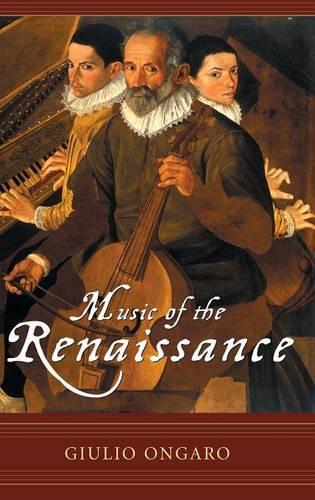
Music of the Renaissance
(Hardback)
Publishing Details
Music of the Renaissance
By (Author) Giulio Ongaro
Bloomsbury Publishing PLC
Greenwood Press
30th November 2003
United States
Classifications
Tertiary Education
Non Fiction
History
780.9031
Physical Properties
Hardback
224
Width 156mm, Height 235mm
454g
Description
Though musicians could not draw on rediscovered classical texts, as writers, and plastic artists could, Ongaro (says that between about 1425 and 1600, music underwent the same kind of change as other professions in Europe at about the same time.
Reviews
[O]ffers a survey of many aspects of music spanning the flourishing of the Dunstable and Dufay generation to the turn of the sixteenth and seventeenth centuries. A susbstantial introduction is followed by chapters covering genre and form, sixteenth-century dance and dance music, organology and music publishing, in that order. This organization makes for easy reference and is happily complemented by a section comprising microbiographies of many of the individuals discusses within the main chapters....The discussion of the daily lives of Renaissance musicians employed at courtly and ecclesiastical institutions reveals a clear insight into the social barriers between gentlemen and different categories of professional musicians.-The Sixteenth Century Journal
Ongaro provides nonmusicians with a thoughtful perspective on Renaissance music as it developed not only within its own domain but as a greater part of European society and cultural life in its entirety. The author presents the regional stylistic developments with clarity and highlights pivotal composers' place in history for readers to subsequently explore....Ongaro's language is appropriate for the uninitiated becoming acquainted with this vast body of music, which is too-often neglected in the mainstream outlets of art music and within the popular media. Indeed, this would be a great place for a budding young musicologist to start in order to observe how the broader scope of history is made whole with the discipline. Highly recommended. Lower- and upper-division undergraduates; general readers.-Choice
"Offers a survey of many aspects of music spanning the flourishing of the Dunstable and Dufay generation to the turn of the sixteenth and seventeenth centuries. A susbstantial introduction is followed by chapters covering genre and form, sixteenth-century dance and dance music, organology and music publishing, in that order. This organization makes for easy reference and is happily complemented by a section comprising microbiographies of many of the individuals discusses within the main chapters....The discussion of the daily lives of Renaissance musicians employed at courtly and ecclesiastical institutions reveals a clear insight into the social barriers between gentlemen and different categories of professional musicians."-The Sixteenth Century Journal
"[O]ffers a survey of many aspects of music spanning the flourishing of the Dunstable and Dufay generation to the turn of the sixteenth and seventeenth centuries. A susbstantial introduction is followed by chapters covering genre and form, sixteenth-century dance and dance music, organology and music publishing, in that order. This organization makes for easy reference and is happily complemented by a section comprising microbiographies of many of the individuals discusses within the main chapters....The discussion of the daily lives of Renaissance musicians employed at courtly and ecclesiastical institutions reveals a clear insight into the social barriers between gentlemen and different categories of professional musicians."-The Sixteenth Century Journal
"Ongaro provides nonmusicians with a thoughtful perspective on Renaissance music as it developed not only within its own domain but as a greater part of European society and cultural life in its entirety. The author presents the regional stylistic developments with clarity and highlights pivotal composers' place in history for readers to subsequently explore....Ongaro's language is appropriate for the uninitiated becoming acquainted with this vast body of music, which is too-often neglected in the mainstream outlets of art music and within the popular media. Indeed, this would be a great place for a budding young musicologist to start in order to observe how the broader scope of history is made whole with the discipline. Highly recommended. Lower- and upper-division undergraduates; general readers."-Choice
Author Bio
GIULIO ONGARO is Associate Professor of Music History and Literature at the Thornton School of Music, University of Southern California.
